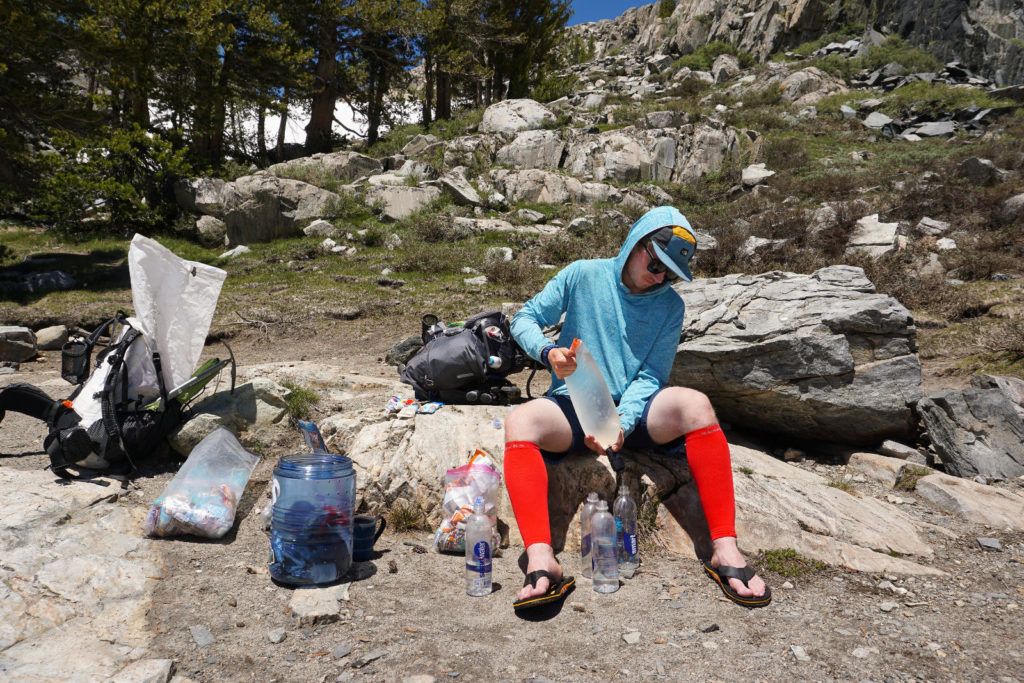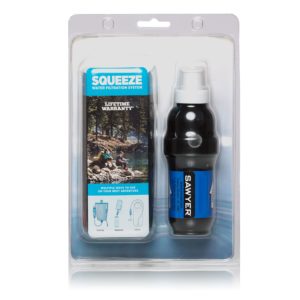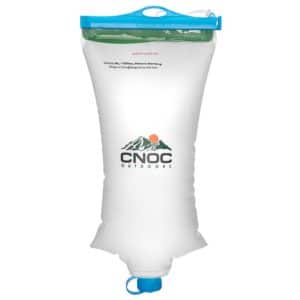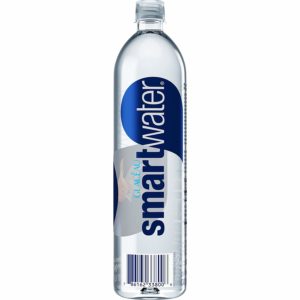My Favorite Backcountry Hydration System

There's no doubt about it, your water treatment system is one of the most important pieces of your gear set-up. Good treatment means good hydration which means good backpacking experiences. I can say from first-hand experience that when your system sucks you inevitably lean towards dehydration, and that can ruin a trip. Or you lean towards drinking dirty water, and that can really ruin a trip.
Elements Of A Good Hydration System
In my opinion there a few key things that distinguish good water treatment systems from bad ones. The most important ones are reliability, usability, effectiveness, and weight.
Reliability
High reliability means you don't have to worry about failure of the system. Nothing will have ultimate reliability, but some things are definitely more reliable than others. UV sterilizing pens, for example, are relatively unreliable because they are battery operated.
Usability
A system with high usability is one that works well in a variety of situations and is intuitive to use. Different systems vary in usability from person to person for sure, but some stand above the rest.
Effectiveness
How well does it actually treat water? If your system is only 50% effective at removing Giardia (aka beaver fever, aka diarrhea hell) it's probably not worth bringing. Also, some systems like UV pens vary in effectiveness depending on water clarity.
Weight
This one is pretty self-explanatory. You can have the most reliable system that works in every possible situation, but if it weighs ten pounds you'll probably never use it.
My Favorite Water Treatment System For Backpacking
Having considered the impacts of all of the above, I finally came across a system I'm super stoked about. As a disclaimer, this system is elegantly simple and I'm sure I didn't invent it. But I'll go into the details of why I love it and why I think it's the best system for 95% of people.
Basically it boils down to this:
- A Sawyer Squeeze or Micro Squeeze filter
- At least one CNOC Vecto water bladder
- 1-2 Smart water bottles
The Sawyer Squeeze

The Sawyer Squeeze is a great water filter for backpacking. It's simple to use (attach and squeeze), extremely effective, and light. It's flow rate-to-weight ratio is also one of the best. It and it's little brother, The Micro, have become the de facto filters for the long distance backpacking world (*pro-tip: NEVER use the Sawyer Mini). The problem with Sawyers? They come with their own squeeze bags, and they are absolutely terrible.
They're crunchy, break easily, and they're hard to fill. The solution? The CNOC Vecto water bladder.
The CNOC Vecto Bag

These bags are the key to this system. I wouldn't call them indestructible, but they're the closest thing you'll find on the market. They have a breaking point of 220 pounds, and while I have no idea what that really means, in their promo video they show a man stand on the bag, full of water, without it breaking. Looks strong to me.
On top of that, they're really light. They have two openings, one wide mouth and one that Sawyer filters can screw onto. That means easy filling and easy squeezing. They are 100% the best water bag for backcountry water filters.
*Side-note: By all accounts, they also have amazing customer service. My first Vecto had a couple leaks and within hours of sending them an e-mail a new bag was on the way.
Smart Water Bottles

You have to have something to store clean water in and drink out of, right? I'll grant that there are lots of options for this, but I like Smartwater bottles. They're light, you can screw Sawyer filters directly onto them if necessary, and if you get the kind with the nipple you can use it as a backflusher to clean your Sawyer filter. Also, I just prefer drinking out of a water bottle to drinking out of a hose, but YMMV.
Evaluation
Why is this the best system? I'll break it down.
First, reliability. The CNOC bags are crazy strong, and as long as you don't ever freeze your Sawyer, you're good for up to 100,000 gallons of filtering. That's 126,000 3L bags, so you'll probably lose the filter before you hit that limit. Add the bottles for water carrying/filtering redundancy and you have an extremely reliable system.
Second, usability. The CNOC bags come in either blue or orange so you can easily designate clean and dirty bags. The Sawyer filters also screw directly onto the bags and all you have to do is squeeze for a good flow rate. Also, if you want to gravity filter instead of squeeze, that's easy too. The sawyer filter comes with a gasket so you can screw a CNOC bag onto both ends and let nature do your work for you. On top of that, you can screw a Sawyer directly onto a Smartwater bottle and drink directly from it. There are a lot of ways to mix and match with this system.
As far as effectiveness goes, you can't beat the .1 micron Sawyer. It removes 99.99999% of all bacteria, 99.9999% of protozoa, and 100% of microplastics. Basically you could drink from a manure-filled mud puddle downstream from a Ziploc dump and be just fine, which is good enough for me.
Lastly, weight. The Squeeze weighs 3.4 ounces and the Micro weighs 1.9. The Vecto bags weigh 2.6 ounces for 2L and 2.9 for 3L. Add a hydration tube or some Smartwater bottles and you're looking at another 1-2 ounces. At minimum that's about 7 ounces, and you can add options and redundancies for only a few more. That's extremely light considering the versatility and dependability of this system.
Another great thing about this system is the ability to mix and match for conditions. You can scale up or down incrementally depending on how much water you need to carry or how you want to drink and filter.
How I Use It
If it's just me, I take a 2 liter Vecto, a Sawyer Micro, and two 700ml Smartwater bottles. Most of the places I go are pretty water abundant, so I'll usually filter just enough to fill both bottles and leave the bag empty. If theres a long dry stretch, I'll filter into the bottles and fill up the bag to take with me and filter later. That's a total capacity of about 3.5 liters, which is more than enough for almost any trip.
The ideal set up for both me and Alyssa is a 3 liter Vecto, a full size Sawyer Squeeze, and 4 700ml Smartwater bottles (using the same logic as above). On the John Muir Trail in 2019 we shared a Sawyer Micro, and it was a little too slow for us for that kind of trip. As always, your miles may vary, but this is by far the best water filtration system for backpacking I've ever used, and I'm sure I'll continue to use it in the future.
Feel free to leave any thoughts or questions in the comments below!

Great info! I think I’d still be uneasy about drinking from that manure filled mud puddle but in a pinch I guess it’s nice to know you can. 🙂
Yeah it probably would taste pretty nasty, but better to be able to than not be able to.